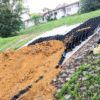Business
How to Breed Feminized Cannabis Seeds
Breeding feminized cannabis seeds has gained significant popularity among growers in recent years. These seeds offer a range of benefits and advantages over regular cannabis seeds, making them highly sought after in the industry. But what exactly are feminized cannabis seeds, and why are they so desirable?
Feminized cannabis seeds are specifically bred to produce only female plants. In traditional cannabis seeds, there is a 50/50 chance of the plant being male or female. However, with feminized seeds, this ratio is significantly altered, with nearly 99% of the resulting plants being female. This is achieved through a process of genetic manipulation that eliminates the male chromosomes, ensuring a higher yield of buds.
The benefits of breeding feminized cannabis seeds
Breeding feminized cannabis seeds offers numerous benefits to both commercial and personal growers. One of the primary advantages is the elimination of the need to identify and remove male plants. This saves time, effort, and resources, as male plants do not produce the desired buds and can potentially pollinate female plants, reducing their quality.
Another benefit is the increased yield of buds. Female cannabis plants are the ones that produce the highly sought-after flowers, which contain high levels of THC and other cannabinoids. By breeding feminized cannabis seeds, growers can ensure that every plant in their garden is capable of producing these valuable buds, maximizing their overall yield.
Furthermore, feminized cannabis seeds allow for greater control over the breeding process. Growers can carefully select the parent plants with desirable traits, such as high THC content, specific flavors, or medicinal properties, ensuring a more consistent and tailored result. This level of control is vital for those seeking to create unique strains or maintain a consistent product line.
The science behind feminized cannabis seeds
The science behind feminized cannabis seeds lies in the manipulation of the plant’s genetic makeup. Normally, cannabis plants have both male and female chromosomes, resulting in a mix of male and female offspring. However, by inducing stress on a female plant, it is possible to trigger the development of male flowers, which can then be used for breeding purposes.
This stress can be induced through various methods, such as interrupting the light cycle, exposing the plant to extreme temperatures, or using chemical treatments. Once the male flowers are produced, they can be used to pollinate other female plants, resulting in feminized seeds. The resulting seeds will carry the genetic traits of the female parent while maintaining the ability to produce only female plants.
It is important to note that breeding feminized cannabis seeds should be done with caution and responsibility. The manipulation of the plant’s genetics can have unintended consequences and may affect the overall genetic diversity of cannabis strains. Therefore, breeders must maintain a balance between creating desired traits and preserving the integrity of the plant’s genetic pool.
Selecting the right parent plants for breeding feminized cannabis seeds
The success of breeding feminized cannabis seeds relies heavily on selecting the right parent plants. These plants should possess the desired traits that the breeder aims to pass on to the offspring. Here are some factors to consider when choosing the parent plants for breeding:
- Genetic Stability: It is essential to select parent plants that exhibit genetic stability, meaning they consistently produce offspring with the desired traits. This ensures a more predictable outcome when breeding feminized cannabis seeds.
- Desired Traits: Breeders should identify the specific traits they wish to enhance or develop in their offspring. These traits can include potency, flavor, aroma, resistance to pests or diseases, or any other characteristic that aligns with their breeding goals.
- Health and Vigor: Parent plants should be healthy and robust, as this indicates their ability to produce strong and resilient offspring. Weak or diseased parent plants may result in weaker or less desirable offspring.
- Compatibility: It is important to ensure that the selected parent plants are genetically compatible. Crossbreeding strains that have compatible genetic profiles increase the chances of successful breeding and the production of desirable offspring.
By carefully selecting the right parent plants, breeders can lay the foundation for successful feminized cannabis seed breeding, increasing the likelihood of achieving their desired results.
Techniques for breeding feminized cannabis seeds
Breeding feminized cannabis seeds involves a variety of techniques that can be employed to induce the desired genetic changes in the plants. Here are some commonly used techniques:
- Silver Thiosulfate Method: This method involves treating female plants with a solution of silver thiosulfate. This treatment inhibits the production of ethylene, a hormone responsible for the development of female flowers. By blocking ethylene production, the treated plants will develop male flowers, which can be used for breeding.
- Colloidal Silver Method: Colloidal silver is a suspension of silver particles in a liquid solution. By spraying a colloidal silver solution on female plants, the silver particles disrupt the plant’s hormone balance, leading to the development of male flowers. These male flowers can then be used to pollinate other female plants.
- Rodelization Method: Rodelization is a natural process that occurs when a female cannabis plant is left to mature beyond its normal harvest time. As a survival mechanism, the plant will produce male flowers in an attempt to pollinate itself before dying. These male flowers can be collected and used for breeding feminized seeds.
- Gibberellic Acid Method: Gibberellic acid is a plant hormone that can be used to induce the development of male flowers on a female plant. By applying a solution of gibberellic acid to female plants, breeders can trigger the production of male flowers, which can then be used for breeding purposes.
Each of these techniques has its advantages and disadvantages, and breeders may choose the method that best suits their needs and resources. It is important to note that these techniques require proper knowledge and expertise to ensure successful breeding and maintain the quality of the resulting feminized cannabis seeds.
Tips for successfully breeding feminized cannabis seeds
Breeding feminized cannabis seeds can be a complex process, but with the right approach and attention to detail, growers can increase their chances of success. Here are some tips to keep in mind when breeding feminized marijuana seeds:
- Start with quality genetics: Ensure that the parent plants used for breeding are of high quality and possess the desired traits. Starting with strong genetic material sets the foundation for successful breeding.
- Maintain a clean and controlled environment: Proper sanitation and a controlled growing environment are essential to minimize the risk of contamination and ensure the health and vigor of the plants.
- Monitor and control stress levels: Stress is a crucial factor in inducing the development of male flowers. However, it is important to strike a balance and avoid excessive stress levels, as this can lead to unhealthy plants or hermaphroditism.
- Maintain a breeding journal: Keeping a detailed record of the breeding process, including the techniques used, parent plant selection, and results, allows for better analysis and future improvements in breeding techniques.
- Implement quality control measures: Regularly test the resulting feminized seeds for genetic stability, potency, and overall quality. This ensures that only the best seeds are used for cultivation or further breeding.
By following these tips, breeders can increase their chances of successfully breeding feminized cannabis seeds and achieving their desired outcomes.
Common mistakes to avoid when breeding feminized cannabis seeds
While breeding feminized cannabis seeds can be an exciting and rewarding endeavor, it is not without its challenges. Here are some common mistakes to avoid when engaging in this process:
- Using low-quality genetics: Starting with low-quality genetics can significantly impact the quality of the resulting feminized seeds. It is crucial to invest in reputable seed banks or breeders to ensure the best possible outcome.
- Neglecting proper sanitation: Failing to maintain a clean and sterile environment can lead to contamination and the introduction of pests or diseases. Regularly clean and disinfect the growing area and equipment to minimize the risk of issues.
- Over-stressing the plants: While stress is necessary to induce the development of male flowers, excessive stress can harm the plants and result in poor-quality seeds. It is important to monitor stress levels carefully and provide optimal growing conditions.
- Improper timing of pollination: Timing is crucial when pollinating the female plants with the male flowers. Waiting too long or pollinating too early can affect the quality and viability of the resulting seeds. It is essential to find the right balance and closely monitor the plants’ development.
- Lack of quality control: Neglecting to test and evaluate the resulting feminized seeds can lead to the propagation of undesirable traits or low-quality genetics. Regularly test the seeds for viability, germination rate, and genetic stability to ensure the best possible outcome.
By avoiding these common mistakes, breeders can improve their chances of success and produce high-quality feminized cannabis seeds.
The importance of quality control in breeding feminized cannabis seeds
Quality control is a vital aspect of breeding feminized cannabis seeds. It ensures that the resulting seeds possess the desired traits, genetic stability, and overall quality. Here are some key reasons why quality control is essential in this breeding process:
- Genetic stability: Quality control measures help ensure that the resulting seeds consistently exhibit the desired traits. This is crucial for maintaining the integrity and consistency of the strain.
- Viability and germination rate: Testing the viability and germination rate of the seeds ensures that they have the potential to develop into healthy and productive plants. High germination rates are a sign of healthy and robust genetics.
- Potency and cannabinoid content: Quality control measures can include testing the potency and cannabinoid content of the resulting seeds. This allows breeders to select seeds that produce plants with the desired levels of THC, CBD, or other cannabinoids.
- Purity and genetic contamination: Quality control helps identify and eliminate any seeds that may be contaminated or carry unwanted genetic traits. This ensures that only the highest quality seeds are used for cultivation or further breeding.
By implementing thorough quality control measures, breeders can maintain the highest standards and produce feminized cannabis seeds of exceptional quality.
Growing and cultivating feminized cannabis seeds
Once the feminized cannabis seeds have been bred and selected, it is time to grow and cultivate them into mature plants. The process of growing feminized cannabis seeds is similar to that of regular cannabis seeds, with a few key considerations:
- Germination: Begin by germinating the feminized seeds in a suitable germination medium, such as peat pellets or rockwool cubes. Provide the seeds with adequate moisture, warmth, and light to encourage healthy and rapid germination.
- Transplanting: Once the seedlings have developed roots and established themselves, transplant them into larger containers or directly into the growing medium. Ensure that the plants have sufficient space to grow and access to the necessary nutrients.
- Lighting and Nutrients: Provide the plants with a suitable light source, such as high-quality LED grow lights or natural sunlight. Additionally, supply them with the necessary nutrients, adjusting the nutrient solution as the plants progress through the different growth stages.
- Environmental Factors: Monitor and control the environmental factors, including temperature, humidity, and airflow. Cannabis plants thrive within specific ranges, and maintaining optimal conditions will promote healthy growth and development.
- Pruning and Training: Prune and train the plants as necessary to promote airflow, light penetration, and overall plant structure. This can include techniques such as topping, low-stress training, or defoliation, depending on the desired outcome.
- Harvesting: Monitor the plants closely for signs of maturity, such as the development of trichomes and the appropriate coloration of the pistils. Harvest the plants at the optimal time to maximize potency and flavor.
By following these steps and providing the necessary care and attention, growers can cultivate feminized cannabis seeds into healthy, robust plants that produce high-quality buds.
Conclusion
Breeding feminized cannabis seeds offers numerous benefits for both commercial and personal growers. The ability to produce only female plants, increase yield, and have greater control over the genetic traits are just a few of the advantages. However, it is crucial to approach the breeding process with caution, ensuring the selection of high-quality parent plants and implementing proper techniques.
By following the tips and techniques outlined in this article, breeders can increase their chances of success and produce feminized cannabis seeds of exceptional quality. Additionally, incorporating thorough quality control measures is vital to maintain the integrity and consistency of the resulting seeds.
Whether you are a seasoned grower or just starting in the world of growing cannabis seeds, breeding feminized cannabis seeds opens up a world of possibilities. With the right knowledge, dedication, and attention to detail, you can create unique strains, enhance desirable traits, and contribute to the ever-evolving cannabis industry.
So, why not give it a try? Explore the exciting world of breeding feminized cannabis seeds and unlock the potential of this remarkable plant.

















You must be logged in to post a comment Login